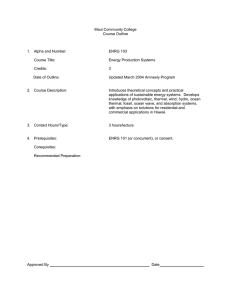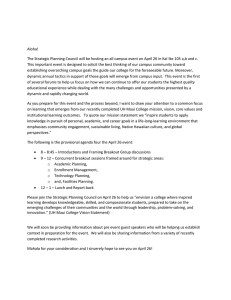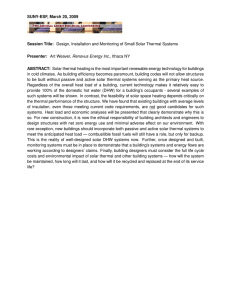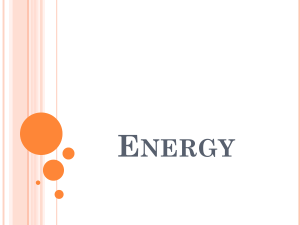Maui Community College Course Outline 1. Alpha and Number:
advertisement
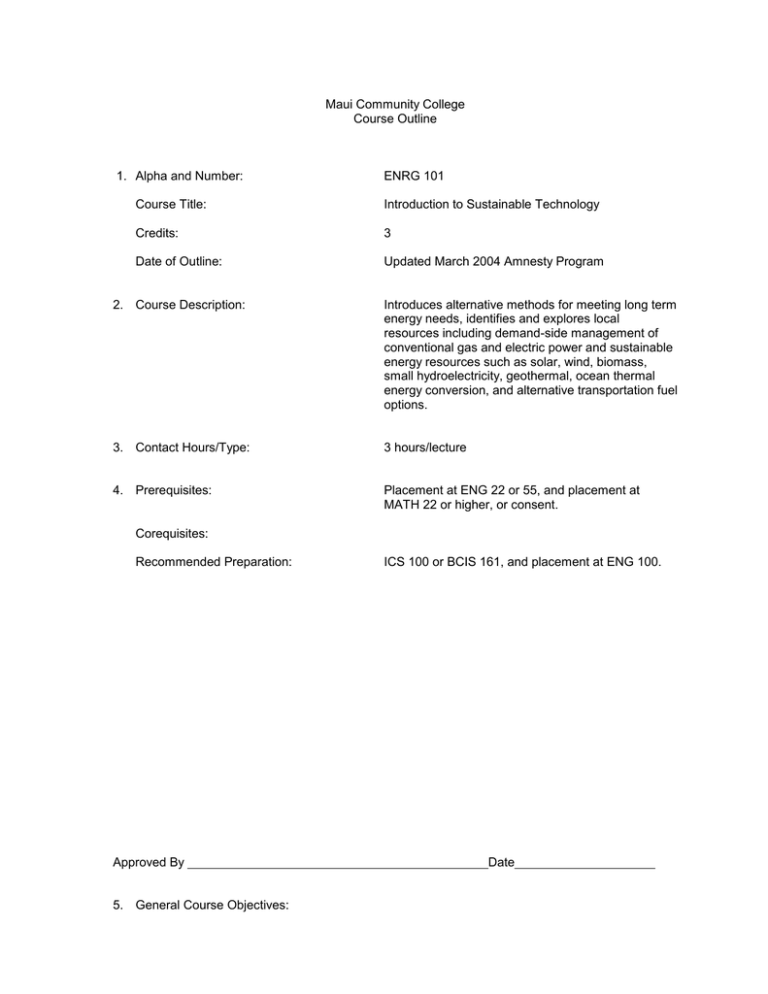
Maui Community College Course Outline 1. Alpha and Number: ENRG 101 Course Title: Introduction to Sustainable Technology Credits: 3 Date of Outline: Updated March 2004 Amnesty Program 2. Course Description: Introduces alternative methods for meeting long term energy needs, identifies and explores local resources including demand-side management of conventional gas and electric power and sustainable energy resources such as solar, wind, biomass, small hydroelectricity, geothermal, ocean thermal energy conversion, and alternative transportation fuel options. 3. Contact Hours/Type: 3 hours/lecture 4. Prerequisites: Placement at ENG 22 or 55, and placement at MATH 22 or higher, or consent. Corequisites: Recommended Preparation: Approved By 5. General Course Objectives: ICS 100 or BCIS 161, and placement at ENG 100. Date To introduce state-of-the-art resources in the emerging field of energy production/management. To identify and explore the mix of resources available on Maui and in the State of Hawaii. To experiment with existing sustainable projects on campus and in the community. To participate in publicizing sustainable solutions on campus and in the community 6. Student Learner Outcomes: For assessment purposes, these are linked to #7. Recommended Course Content. On successful completion of this course, students will be able to: a. explore existing power production systems; b. explore energy management systems (EMS), lighting systems, HVAC systems, timers and controls; c. operate PCMAP software for on-line monitoring of campus meters, graphing, foot printing and report writing; d. conduct pre- and post-retrofit testing of lighting circuits, calculations of energy savings and implications for reduction in electric bill; e. explore solar thermal applications, heating water, drying/cooking food products, running air conditioning systems and distilling water; f. explore solar thermal/photovoltaic project utilizing EcoCottage and campus demonstration project building plans and site; g. explore wind and Micro Hydroelectric systems project utilizing EcoCottage and existing Maui County installations; h. explore biomass systems, composting, agriculture wastes, ocean plants, feed stock, landfill implications, chemical processes and anaerobic digestion systems such as the anaerobic digestion plant at STI in Kula; i. explore hybrid systems, battery technology, low voltage control systems, inverters and generators, and alternative transportation fuels, geothermal and ocean thermal applications; j. prepare an integrated resource plan (IRP), combining all systems into a written plan to be used as input to PUC approved IRP committee. 7. Recommended Course Content and Approximate Time Spent on Each Topic Linked to #6. Student Learner Outcomes. 2-3 Weeks: General Power Distribution Systems (a-d) 2-3 Weeks: Solar thermal, Solar electric, wind, microhydro, and hybrid systems design and construction methods (e-g) 3-3 Weeks: Biomass energy/digestion systems, design and operation. (h) 2-3 Weeks: Energy storage, low voltage control systems, inverters and generators (i) 2-3 Weeks: Integrated Resource Planning, combining all systems into a written plan for input to PUC approved IRP committee. (j) 8. Text And Materials, Reference Materials, Auxiliary Materials and Content: Appropriate text(s) and materials will be chosen at the time the course is to be offered from those then currently available in the field. Examples include: Texts: Hazen, Alternative Energy, An Introduction to Renewable Energy Sources, 1st Edition. Berger, Charging Ahead, The Business of Renewable Energy. Materials: Proprietary Workbook Practice Sets Articles and/or handouts prepared by the instructor Magazine or newspaper articles Other: Appropriate films Videos or internet sites Television programs Guest speakers Other instructional aids 9. Recommended Course Requirements and Evaluation: Specific course requirements are at the discretion of the instructor at the time the course is being offered. Suggested requirements might include, but are not limited to: 40% Quizzes, midterm and final exams 40% Design projects and workbook sets 20% Attendance and/or class participation 10. Methods of Instruction: Instructional methods will vary considerably with instructors. Specific methods will be at the discretion of the instructor teaching the course and might include, but are not limited to: a. b. c. d. e. f. lecture, problem solving and class exercises; class discussions or guest lecturers; audio, visual or internet presentations; student class presentations; group or individual projects; other techniques (service learning, co-op, self-paced, etc).
